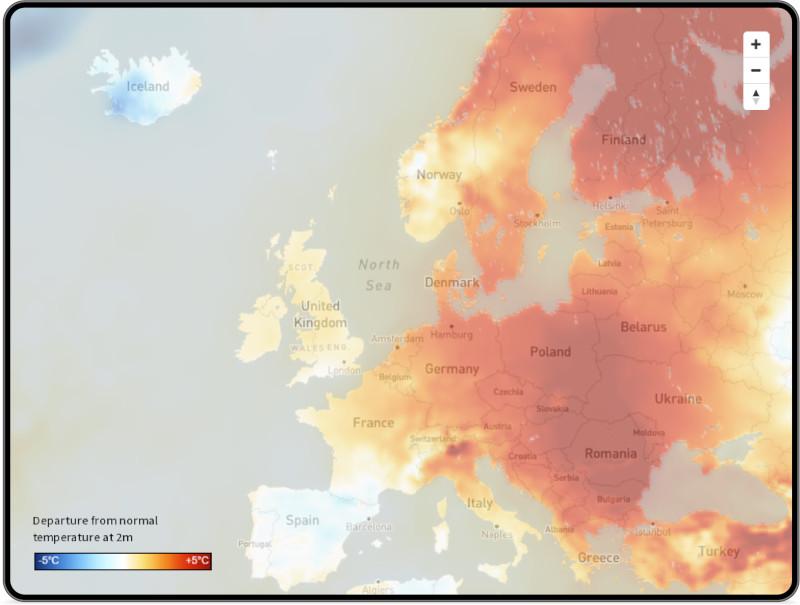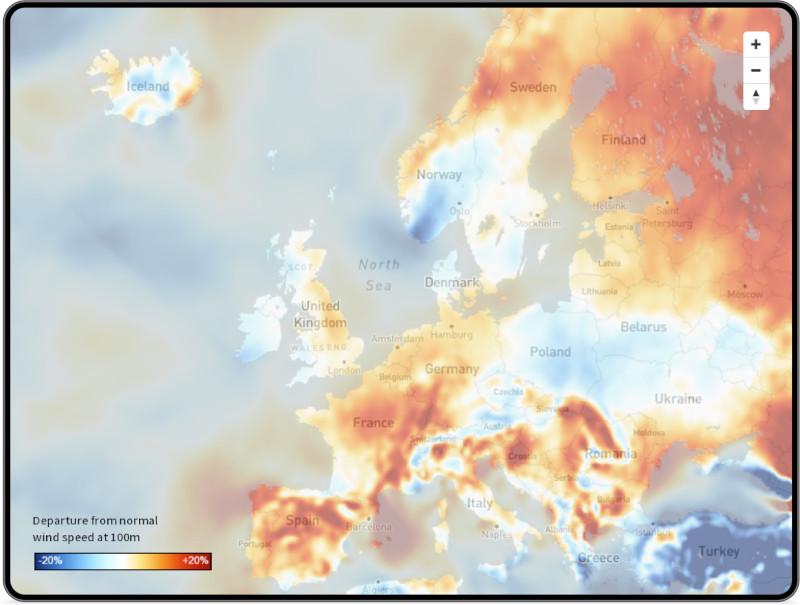Concern turns to calm as Europe's energy supply is boosted by warm weather
All eyes were on Europe’s energy supply and demand going into this winter. With energy disruptions and price spikes on the horizon and inflation driving up basic costs, everyone was hoping for a warm winter to reduce demand and mitigate the risk.
As it turned out, January 2023 was not only significantly warmer than average for most of Europe, which helped reduce demand, but there was also plenty of wind to increase the supply of clean electricity too.

The map above shows air temperature anomalies across Europe for January 2023. Red indicates areas that were above average for the month and blue shows areas that were below average.
January was exceptionally mild for most of Europe with temperatures in central Europe and the Nordic region around 5 °C warmer than usual. These warmer temperatures in what is usually one of the coldest months of the year helped reduce energy demand significantly across most of Europe.1 Only Spain, Portugal, and Iceland had air temperatures that were typical for the time of year.

This second map shows wind speed anomalies, with red representing areas where wind speeds were above average for the month and blue indicating areas that were below average.
Given the growing number of wind energy projects in Spain, France, Germany, and the UK, January’s increased wind showed up where and when it was needed. Higher-than-average wind speeds boosted the energy supply from clean sources and helped reduce the dependence on coal and gas.
With the coldest time of the year now behind us and the rest of the winter expected to be warmer than usual, confidence is high that Europe avoided a major energy crisis this winter.2 This will be a relief for many, but the role of climate change in European energy markets cannot be ignored.
While some winters are warmer than average due to natural climate variability, a portion of this winter’s warming can be statistically linked to climate change. Europe avoided the worst-case scenario this winter, but many now worry about what the summer holds as global warming continues.
Free access to over 40 years of historical wind and solar data
You can explore these maps and trends for yourself with the Vaisala Xweather Climate Reference Tool. Access is free after creating an account.
The data covers the entire globe and includes temperature, wind speed, direct normal irradiance, and global horizontal irradiance. We have over 40 years of historical data available, which you can view by month, quarter, or year.
Europe’s accelerating electricity transition
Europe has ramped up its efforts to transition to clean energy in response to Russia's invasion of Ukraine in 2022. The focus is now on reducing gas consumption and phasing out coal, a goal that is made easier by the warm temperatures and above-average wind speeds we are seeing this winter.
Vaisala supports the renewable energy industry with comprehensive historical weather data and industry-leading wind and solar energy forecasts for renewable energy projects and markets. Learn more about our solutions for energy and utilities at Xweather.com.
References
1. “Europe Is Winning the Winter War by Sheer Luck,” Bloomberg, January 18, 2023
2. “Mild February Will Help Extend Europe’s Gas Storage Buffer,” Bloomberg, February 1, 2023


Add new comment